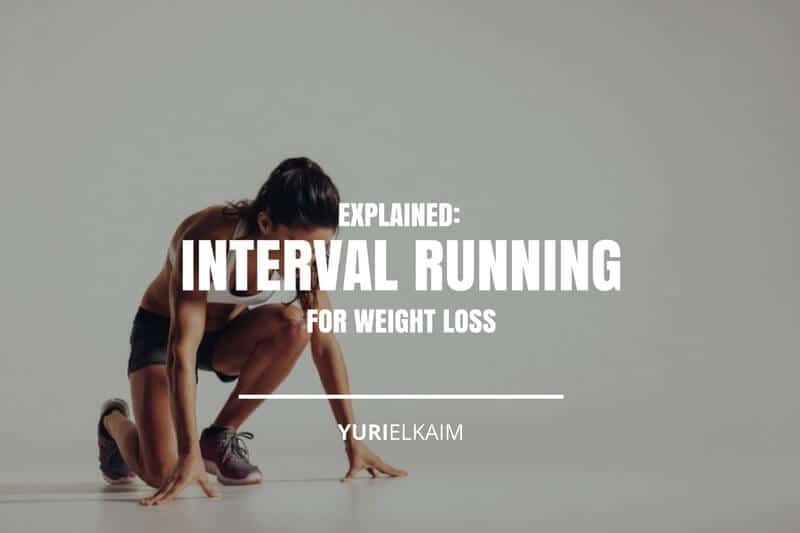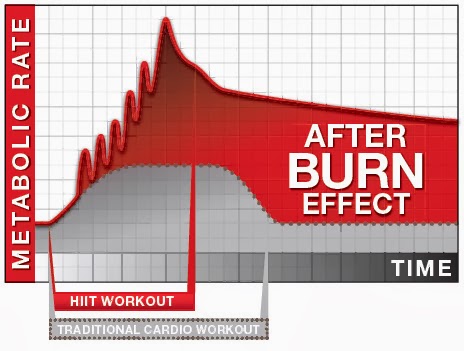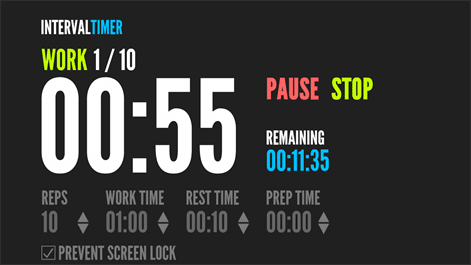In this article
Most of the time when we start running in order to lose weight, we think we have to spend hours jogging on the treadmill – being bored out of our minds.
After all, we’ve been told for years that the best way to lose fat is to increase our cardio, and running seems like an obvious choice to do that.
But before you get bummed out how long you’ll have to spend at the gym, know that there is a better and more efficient route that just takes minutes a week.
Interval Running for Weight Loss
Interval training is a unique type of workout that alternates periods of intense activity with periods of rest. Even though it sounds simple, the results speak for themselves.
In fact, research shows that interval training is overall the best way to burn fat – way better than steady-state cardio.
A study from Canada’s McMaster University showed that three-minute intervals on a stationary bike (30 seconds of intense pedaling followed by a short rest) repeated five or six times produced the same muscle and cell adaptations as a bike ride lasting between 90 minutes to 2 hours (1).
What type of adaptations exactly?
First, an increase in fat-burning proteins that push your body to use more fat as a fuel source, as well as an increase in growth hormone and fatty acid mobilization (2).
Another study compared interval training to aerobics, and found that interval training was more efficient at fat burning than conventional aerobics.
Out of the two groups in the study, the aerobics group burned 48 percent more calories per session than the HIIT group, but the HIIT group burned an amazing 900 percent more fat over the 15 weeks than the first group burned in 20 weeks (3).
How awesome is that?
Feel the (After)Burn
How is this possible? The key lies in a term referred to as excess post-exercise oxygen consumption (EPOC) or “afterburn” – the amount of calories you burn after a workout.
After you work out, your body is busy trying to return all of your body systems back to normal – your oxygen levels, blood pressure, body temperature, heart rate, etc. – plus repair damaged muscle tissues, fuel your muscles, and shuttle out lactic acid, among other things.
All of this “busyness” involves using energy (calories), which equals more calories burned after your workout.
The thing is, EPOC is higher following shorter, higher-intensity workouts than after longer, steady-state “chronic cardio” style workouts.
Although how much afterburn you experience is unique to you, studies have shown a 4.2 percent elevation in metabolism following high-intensity workouts that resulted in increased fat oxidation over a 16-hour period (4).
Another study showed this “afterburn” can last for up to 24 hours following your workout (5). Talk about getting more bang for your buck!
So basically, it’s like this:
Working out for a shorter amount of time at a higher intensity actually burns more fat over the long term than working out for longer periods.
Now, unless you’re a treadmill hugger, this is very good news!
Now, lets take a look at the elements of interval running for weight loss that make it so powerful.
The 5 Elements of Interval Training
1. Work Interval Intensity
Intensity is the most important aspect of interval training. Without it, you’re in steady-state cardio mode, which shows zero to negligible results when it comes to fat loss.
A study from the University of New South Wales Medical Sciences found that high-intensity intermittent exercise burned three times more body fat than steady-state cardio.
Researchers reported that a group that sprinted on a bike for 8 seconds, followed by 12 seconds of light exercise – for a total of 20 minutes – lost 2.5 kg of subcutaneous fat, while another group that did 40 minutes of continuous steady-state exercise had no loss of fat (6).
How does this work?
Instead of tapping into the aerobic system, which is “on” during longer, low-intensity cardio sessions, when you do intervals you’re switching on the anaerobic system.
The anaerobic system (which is what fuels you during sprints and similar activities) produces lactic acid: a signal that the body is rapidly consuming energy to the point where it no longer has sufficient oxygen for the muscles to function.
This leads to the fat-burn effect we spoke of earlier.
So how hard should you work out during the “hard” part of the intervals? You should be hustling at about 85 to 100 percent of all-out effort/sprinting.
2. Work Interval Duration
How long should you work at that high level?
A lot of that depends on your current fitness level and workout history.
You’ll quickly find it’s almost impossible to maintain an all-out sprint for more than 30 seconds. That’s why when you first get started with interval training, you have to take into account your current condition and then, as your fitness improves, ramp up how long your “work” intervals are and how many of them you complete during a workout.
We’ll discuss this more below, with examples of workouts for beginners and intermediate/advanced levels.
3. Recovery Interval Intensity
Even though the recovery period of interval training is termed “recovery,” it’s basically simply lowering your work intensity to a pace that lets your body “reset” for a brief period of time so that your body is ready to go again for another period of intense work.
Depending on your fitness level, the recovery interval could be a brisk walk, light jog, all the way to a faster run (but not a sprint).
4. Recovery Interval Duration
How long you stay in recovery mode between working intervals is pretty important. That’s because we want to take just enough recovery so we can go hard again, but not so long that we lose the intensity of our workout.
Limiting the recovery period helps maintain “cardiovascular drift,” which is when your heart rate steadily increases during a workout, regardless of a change in workload.
Maintaining this drift allows us to stay at a higher heart rate for longer – boosting metabolic output and fat burn.
5. Number of Intervals
The number of intervals depends on a few factors, such as how much time you have for your workout and also your level of fitness.
For instance, the fitter you are, the more intervals you will get through during your workout, as your recovery intervals are shorter.
Beginners Guide to Interval Running for Weight Loss
I usually recommend beginners start with a 1:4 work-to-rest ratio, where your rest period is four times longer than the work period.
Here are a few examples:
- 30 seconds of sprinting (80 to 90 percent max effort) followed by 2 minutes recovery
(jogging/walking). Repeat 5 times. - 10 seconds sprinting at 100 percent effort followed 40 seconds of recovery (jogging). Repeat 6 times.
Intermediate and Advanced Interval Running for Weight Loss
The great thing about interval running is its scalability. There are so many ratios available it would be hard not to find one that suits your current fitness level.
The one thing to remember as you become more advanced, you will want to reduce your work-to-rest ratio.
For instance, say you began with a ratio of 1:4. As you get fitter, you can slightly scale back your rest time – and then as you get even more fit, you could ramp up your work time.
Some samples:
- 1:3 Work 30 seconds, recover 90 seconds
- 1:2 Work 30 seconds, recover 60 seconds
- 1:1 Work 30 seconds, recover 30 seconds.
- 2:1 Work 30 seconds, rest 15 seconds
- 3:1 Work 45 seconds, rest 15 seconds
Or for an intense 1:1 work-to-rest ratio you also could do 10 seconds at 100 percent effort : 10 seconds of recovery, repeated for 10 minutes
Basically, the harder or longer you work during the intensity bursts, the shorter the workout, as you will be taxing your body systems.
[Related: Interval Training for Weight Loss (In Just 3 Minutes?)]
How Often Should You Practice Interval Running?
Another beautiful aspect of interval running is that you only need to do it 2 to 3 times per week to see results.
This may not seem like enough at first glance. But a study from the Journal of Applied Physiology that showed just seven interval training sessions over two weeks lead to an increase in fat burn by 36 percent (7).
Another study found that performing high-intensity interval training just three times per week reduced body weight by 2.3 kg, while also increasing VO2 max (an important measure of cardiovascular fitness) by 26 percent (8).
Treadmill Note
Note that treadmills aren’t always the best option for interval running, as they usually take more than 10 seconds to reach full speed (which lengthens your recovery period).
It’s best to perform these intervals outside on a level surface to see maximum results.
Beat Boredom, Blast Fat
Nothing beats interval training for fat loss.
Incorporating this style of training into a running routine will not only turn you into a fat-burning furnace, but cut out endless treadmill boredom, increase your performance in sports, and boost your overall fitness and endurance.
Try It and See with this Free Workout
Want a little helpful guidance to push yourself during your interval workout?
Download my FREE Speed Burst Interval Workout and I’ll help! This is the ultimate follow-along interval cardio workout to burn more fat and improve your cardio endurance in just 5 minutes.
Click the banner below to get started right now!




